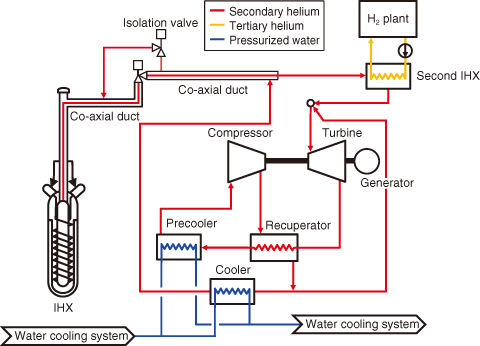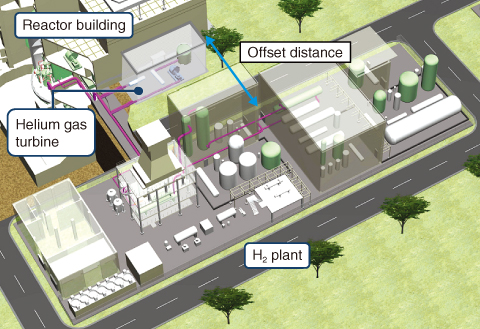
Fig.6-2 Flow diagram of the candidate heat application system coupled to the HTTR

Fig.6-3 Candidate heat application system layout coupled to the HTTR
For the utilization of nuclear heat in industrial applications such as hydrogen production and high-efficiency power generation, the following technical issues should be resolved. First, a formulation of the safety requirements and a validation of the design considerations for coupling a hydrogen production plant (H2 plant) to a nuclear facility must be completed. Second, the overall performance of the He gas turbine must be confirmed. The present study identifies the tests that must be conducted using the HTTR. Additionally, plant concepts are proposed for the heat application system to be coupled to the HTTR.
We aim to formulate safety requirements through a licensing review of the Nuclear Regulation Authority for coupling an H2 plant to the HTTR. The design considerations will also be validated by a test simulating H2 plant accident. Furthermore, continuous operation at the rated power, in addition to start-up and shut-down test operations of the He gas turbine, will be performed to demonstrate safe and reliable operation at steady and transient conditions assumed in the actual environment for the performance confirmation of the He gas turbine.
System configurations are investigated to minimize the amount of modification to the existing HTTR facility, as well as to simulate the configuration of a commercial system. A cascade configuration with a second intermediate heat exchanger (IHX), which transfers heat to the H2 plant, and a He gas turbine, which consists of a turbine, compressor, generator, precooler, and recuperator, is selected as one of the candidates (Fig.6-2). Additionally, the plant layout is preliminarily determined with sufficient offset distance to ensure the integrity of the reactor building (including safety-related systems, structures, and components) and habitability of the reactor control room against leakages of combustible and hazardous chemicals (Fig.6-3).
Further study will be conducted for system design, component design, and layout design to finalize the plant concept. Furthermore, a safety evaluation will be performed to expedite the first-of-a-kind demonstration of nuclear heat application with the HTTR.
<Previous: 6 Nuclear Hydrogen and Heat Application Research | Next: 6-2 >